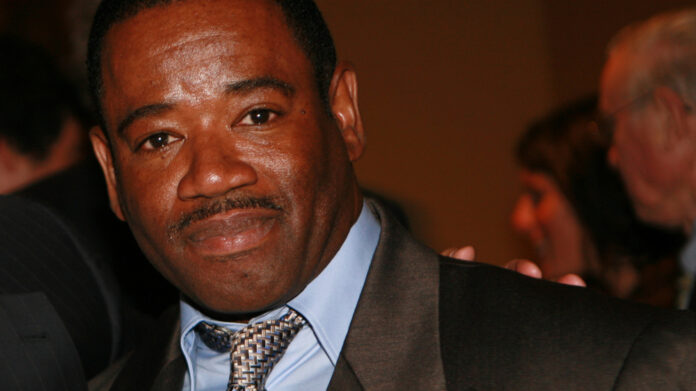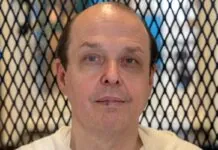
Jerry Miller spent more than two decades in prison for a crime later proven false through DNA evidence. His case became a turning point for the Innocence Project and a stark example of how eyewitness error and investigative shortcuts can cost an innocent man his freedom.
In the sections ahead, the focus will be on his biography, the events that led to his conviction, the fight for exoneration, and his life after release.
The 1982 Conviction in Chicago
On a September night in 1981, a young woman was attacked inside a parking garage on Chicago’s North Side.
She was forced into the trunk of her car and sexually assaulted. Two attendants working at the garage spotted her car being driven out and tried to stop it.
The attacker fled on foot, leaving behind clothing that police collected as evidence. With pressure to solve the case, investigators turned their attention quickly to a young man named Jerry Miller.
Eyewitness Accounts
Detectives circulated a sketch based on witness descriptions. One officer claimed it looked like Miller. That suggestion set the direction of the case.
Two attendants later identified him in a lineup, despite the fact that their first statements had not matched each other.
The victim told the court she had kept her eyes closed through most of the assault and could not be certain of the attacker’s face.
Even with those doubts, prosecutors treated the identifications as reliable.
Trial and Conviction
In October 1982, the case went before a jury. Miller faced four charges: rape, robbery, aggravated kidnapping, and aggravated battery.
His father testified that they had watched the Hearns–Leonard fight together the night of the crime, but the jury dismissed the alibi.
No DNA testing or other forensic analysis was presented. The conviction rested almost entirely on memory.
Miller was sentenced to 45 years in prison.
Years Taken, Punishment That Never Ended
Jerry was 22 when the cell door shut. Birthdays came and went behind concrete walls, and every appeal ended the same way — denied.
The label of rapist followed him for more than two decades, shaping how guards saw him, how courts ignored him, and how the outside world would later treat him.
Parole finally brought him home, but home was no refuge. An ankle monitor tracked his movements even as he sat at his own kitchen table.
Jobs were hard to keep because his breaks, his hours, even his routes to work were dictated by parole officers. Neighbors whispered, and landlords turned him away.
Halloween carried its own humiliation. Parents steered their children past his door. He was ordered to keep the lights off and stay inside as the neighborhood filled with laughter.
In that silence, he felt the weight of a punishment that did not end with his release.
The Innocence Project and DNA Evidence
By the time the Innocence Project entered Jerry Miller’s case, he had already endured more than twenty years inside Illinois prisons.
Legal appeals had been exhausted, parole still chained him to the label of rapist, and no one in power was willing to reconsider the verdict.
What remained was the evidence locked away in storage.
The Forgotten Clothing
Among the items police had collected in 1981 was a slip worn by the victim. It carried semen stains.
For decades, that piece of evidence sat in boxes, ignored by prosecutors and never tested in court.
The Innocence Project pushed for new forensic analysis, arguing that Miller’s fate had been sealed on eyewitness accounts that never deserved to stand as proof.
- Collected: 1981, from the crime scene
- Stored: in Cook County evidence lockers
- First tested: more than two decades later
The slip told a different story than the witnesses ever had.
DNA That Pointed Elsewhere
Laboratory tests excluded Miller completely. His DNA was not present. The profile that emerged pointed instead to Robert Weeks, a man already logged in the national DNA database because of other convictions.
He had died by then, but the match revealed the identity of the real attacker. For Miller, that test shattered the only case that had held him for most of his adult life.
The Court That Could No Longer Deny
Prosecutors who once fought to keep Miller imprisoned joined the defense in a motion to vacate his conviction.
In April 2007, a Cook County judge threw out every charge. The ruling made Miller the 200th DNA exoneration in the United States.
He walked free only after science uncovered the truth that the system had failed to see.
A Call for Change
The Innocence Project used his case as a rallying point. They argued that Miller’s ordeal showed why reforms were urgent:
- Eyewitness identifications must follow strict safeguards
- Biological evidence must be preserved and available for testing
- Courts must allow post-conviction DNA review as a matter of right
His story became more than personal redemption. It became evidence of systemic failure, a warning that wrongful convictions live in the gaps between human memory and scientific fact.
Life After Prison and Public Role

When Jerry Miller walked out of the courthouse in 2007, the world he entered no longer resembled the one he had known.
Chicago looked different, technology had transformed daily routines, and the family network he once leaned on had aged in his absence.
Freedom came with disorientation, and every ordinary step reminded him of the years that had slipped away.
Work, Housing, and Trust
Employment proved difficult, despite the court order clearing his name. Applications often ended without response once background checks revealed his past.
Temporary jobs kept him afloat, but steady work took time to secure. Housing was another battle.
Landlords hesitated, neighbors whispered, and his reputation followed him even after exoneration.
Rebuilding trust with relatives and friends carried its own weight, as relationships strained by decades of absence could not be mended overnight.
Speaking Out
Miller chose not to remain silent. He joined the Innocence Project’s Exoneree Advisory Council, lending his experience to public forums, universities, and policy discussions.
He spoke about missed birthdays, about the fear that shaped his nights in prison, and about the struggle of reentry into a society that still doubted him.
Students, lawmakers, and journalists heard him as a witness who could not be ignored.
Recognition and Reform
Illinois issued him a pardon in 2008, which opened the door to compensation. He received $199,000 from the state and later reached a $6.3 million settlement with the City of Chicago.
The payments created a measure of stability, yet his public role developed in another way. His story became a warning repeated in policy debates and community discussions.
Standing before audiences, he showed how failures in the justice system were not abstract but painfully real, exposing what happens when courts rush to close cases instead of seeking the truth.
Jerry Miller’s Net Worth in 2025
Jerry Miller’s wealth comes from two sources: $199,000 paid by the state of Illinois in 2008 and a $6.3 million settlement from the City of Chicago in 2011.
Together, they gave him financial security after decades of loss. Reports in 2025 estimate his net worth at about $5 million to $6 million.
No evidence points to other major earnings or business ventures. His money remains the result of compensation for the years he was wrongfully imprisoned.
Final Thoughts
Jerry Miller spent more than two decades in prison for a crime he did not commit.
DNA evidence cleared his name and exposed deep cracks in the justice system. Compensation gave him security, but could never return the years that were lost.
His case remains a warning that wrongful convictions destroy lives long after a court vacates a sentence. Miller stands as proof that truth delayed still carries a heavy price.
Read Next: The Corey Atchison Story – 28 Years for a Crime He Did Not Commit
















